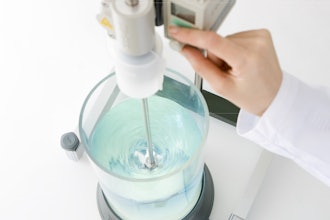
For metal parts produced for a variety of industries, corrosion can become a serious and costly problem. Corrosion is a chemical reaction that occurs when iron in a metal surface reacts with an element in the environment, commonly oxygen and water, causing the metal to begin to break down.
Any metal that will be exposed to a chemically unstable environment, which includes the vast majority of metal parts, is at risk for corrosion if not correctly treated.
Although passivation used to be the gold standard for improving corrosion resistance in stainless steel parts, more and more manufacturers are shifting to electropolishing as a versatile and effective finishing option.
The Problem with Corrosion
Stainless steel and other naturally passive metals are commonly used for applications where corrosion could present a problem – passive metals, when uncontaminated, have a thin, protective oxide film that prevents corrosion from taking place. But this only works if the surface of the metal remains pure and uncontaminated.
As soon as the part becomes contaminated, generally through contact with non-passive metals during various machining processes, it is once again vulnerable to corrosion.
Metal part corrosion is more than just an an aesthetic issue – corrosion negatively impacts part performance and can even endanger the safety and health of consumers in some applications. The food processing and pharmaceutical industries, for example, rely on a high degree of hygiene to protect consumer health.
Corrosion can introduce foreign particulates into the product, and creates a rougher surface on the metal part. Smooth surfaces are ideal as they are easy to clean and maintain; as soon as corrosion establishes a roughened surface, the part is more difficult to thoroughly clean, and the risk of cross-contamination is heightened.
Issues with corrosion also negatively impact a company’s productivity, and ultimately, the bottom line. Parts that have begun to corrode will no longer perform with the same high degree of precision, and parts such as gears that must function smoothly will operate less efficiently when corroded.
Eventually, the corrosion will have such a significant negative impact on the part’s productivity that the part must be replaced, necessitating both downtime and the expense associated with replacing the damaged parts.
How Passivation Prevents Corrosion
For many years, passivation was the main technique used to improve the corrosion resistance of metal parts. Passivation is a chemical process intended to return contaminated metal parts to their original, passive state by removing free iron and other contaminants from the surface of the metal.
To accomplish this, parts are submerged in a bath containing diluted citric or nitric acid for a specified time and temperature. Once returned to the original mill condition, the chromium-rich surface naturally resists corrosion.
The Limitations of Passivation
Although it is generally effective at removing contaminants that are present on the surface of the part, passivation does little to remove embedded contaminants.
Historically, passivation was preceded by pickling the parts in a hydrofluoric acid mixture to remove embedded steel flecks, heat tint, and oxide scale. In response to stronger EPA regulations, however, most companies have eliminated pickling altogether.
While less effective pre-cleaning methods such as vapor degreasing and alkaline cleaning are still employed, the effectiveness of passivation is greatly reduced when pickling is not part of the process. Passivation alone does not remove heat tint, weld discoloration or oxide scale.
Electropolishing to Increase Corrosion Resistance
While passivation can remove surface contaminants from stainless steel parts, increasing corrosion resistance, electropolishing has the added capability of removing embedded contaminants and eliminating imperfections on the surface of the part. In addition to the benefits offered by passivation, electropolishing has added benefits:
- Brightens and electrochemically polishes the metal for a clean, shiny surface that lasts indefinitely;
- Is effective on all grades of stainless steel (passivation is not recommended for certain free-machining alloys);
- Removes the heat tint and oxide scale that can result from heat treating or welding;
- Eliminates surface defects eliminating areas that could be initiation sites for corrosion
Furthermore, stainless steel parts that have been electropolished are 30 times more corrosion resistant than those that have undergone passivation.
How Electropolishing Works
Electropolishing has been described as a “reverse plating” process – while plating involves coating the outer surface of the part with a thin layer of metal, electropolishing works by removing a thin, uniform layer of metal from the part’s surface.
During electropolishing, like passivation, the parts are submerged in a chemical bath. Unlike passivation, however, with electropolishing an electrical current is introduced to the part, and metal ions are removed from the surface electrochemically.
The resultant finish is passive, free of contaminants and initationinitiation sites where corrosion can develop.
 Before (top) and after (bottom) photos of a rack that has been electropolished.Able Electropolishing.
Before (top) and after (bottom) photos of a rack that has been electropolished.Able Electropolishing.
Why Choose Electropolishing?
In recent years, many industries that use metal parts have been moving away from passivation as their primary finishing process in favor of the more versatile and effective practice of electropolishing.
Electropolishing yields corrosion resistant, smooth, precise parts that are ideal for applications in medicine, aerospace, food processing, electronic, automobile, fire safety, and hydraulic and pneumatic systems. Corrosion resistance is a critical issue in these and other fields as it is imperative that parts operate smoothly and effectively, and reach their anticipated life span.
About Scott Potter
Scott Potter is the Vice President of Sales at Able Electropolishing Co., Inc., the world’s largest electropolishing specialist. Scott manages sales and marketing efforts which largely include educating metalworking companies about the effectiveness and added value of electropolishing and other types of metal finishing they provide.























